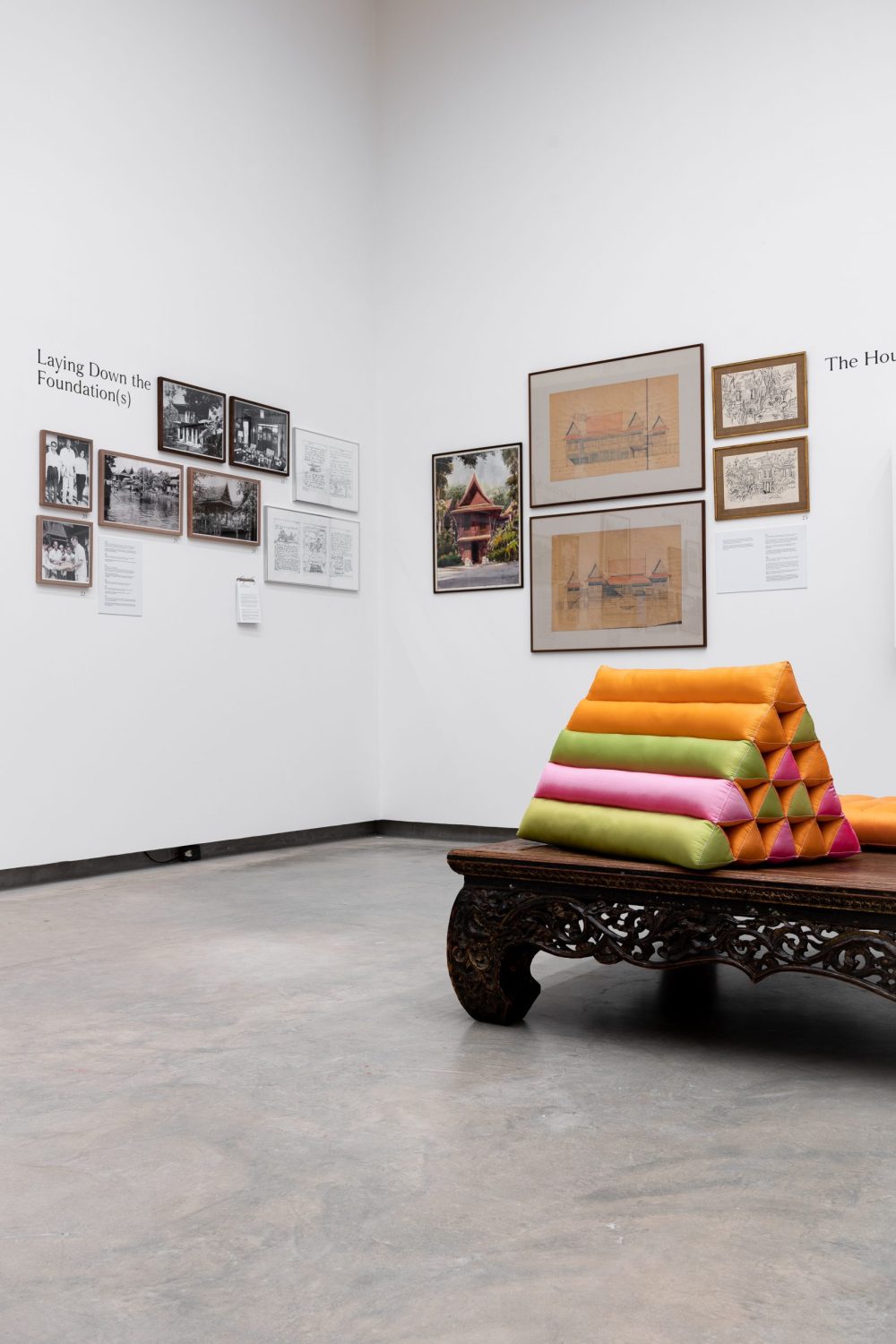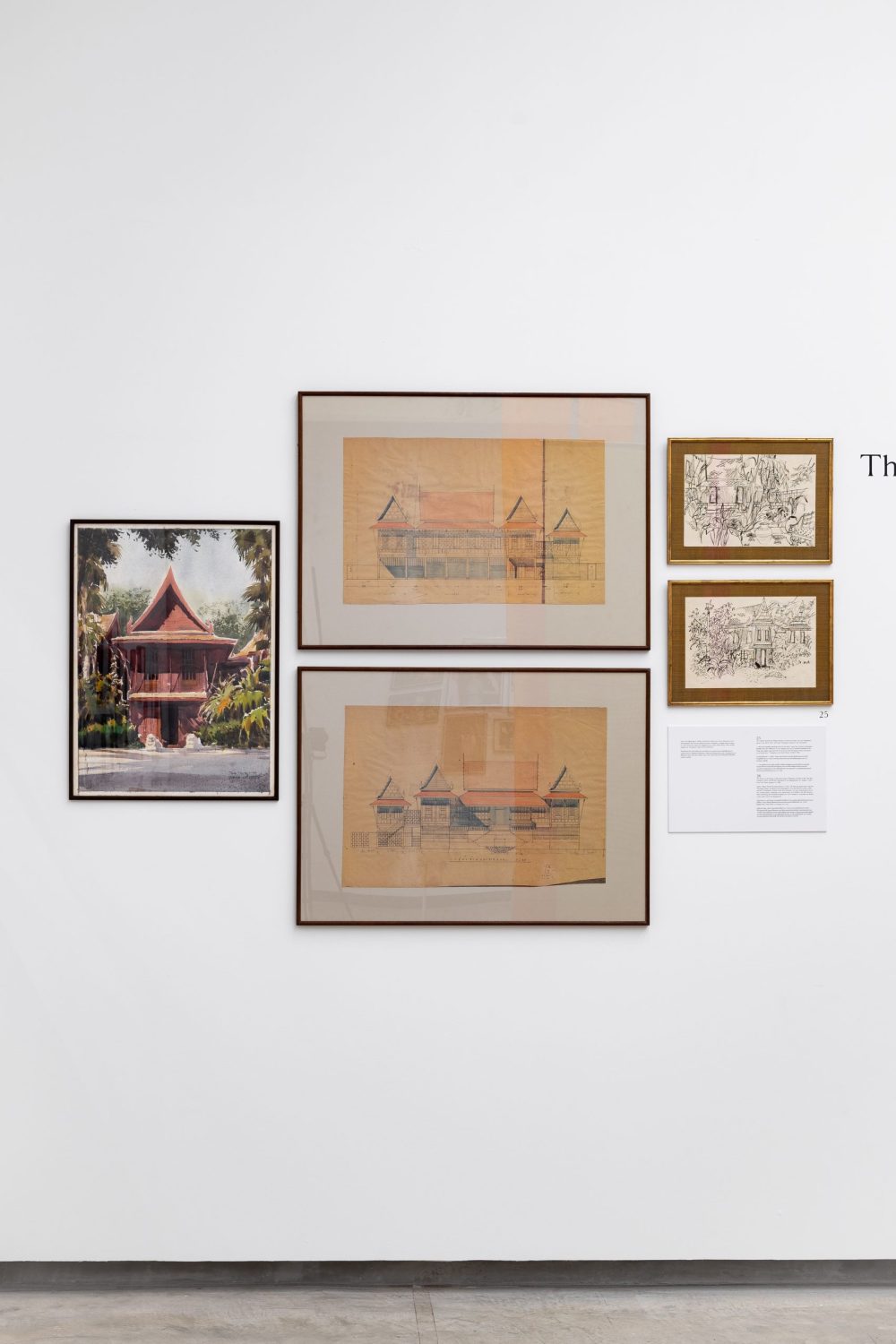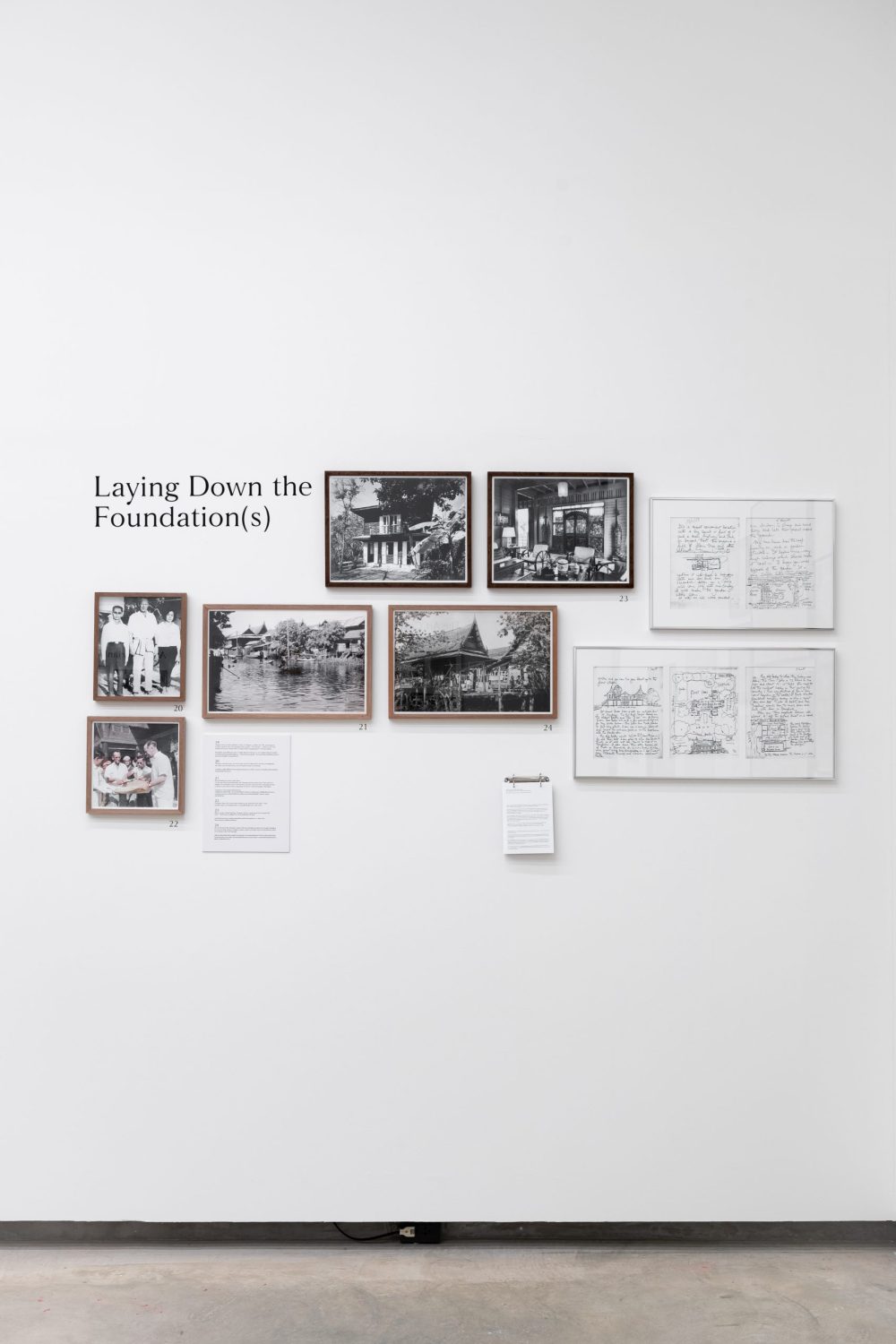THE EXHIBITION REVEALS THE MISCELLANEOUS DETAILS IN THE LIFE OF JIM THOMPSON, THE ‘THAI SILK KING’, AND INVITES THE VIEWERS TO COLLECT AND CREATE THEIR OWN NARRATIVE ABOUT JIM THOMPSON
TEXT: SURAWIT BOONJOO
PHOTO: KOBKIT THITITHANAWAT EXCEPT AS NOTED
(For Thai, press here)
“Do you know that when a search party was sent out to look for him, they found, only a couple of hundred yards from the main road, the wreckage of a plane from the Second World War, and the skeletons of the pilot and the co-pilot were still on the pilot seats.”
The above statement is taken from the documentary, ‘The House on the Klong,’ screened on the furthest wall of the room where the exhibition,‘‘News From Yesteryear: An Insight into the James H.W. Thompson Foundation’s Archive,’’ is being showcased. Although the excerpt bears no connection to the subject or stories the people in the film were talking about, it’s an interesting piece of evidence confirming the residues of excess narrative, kept and included by the author and it will probably eventually be forgotten as a trivial piece of information, just like story added to what most people know about Jim Thompson and his life story.
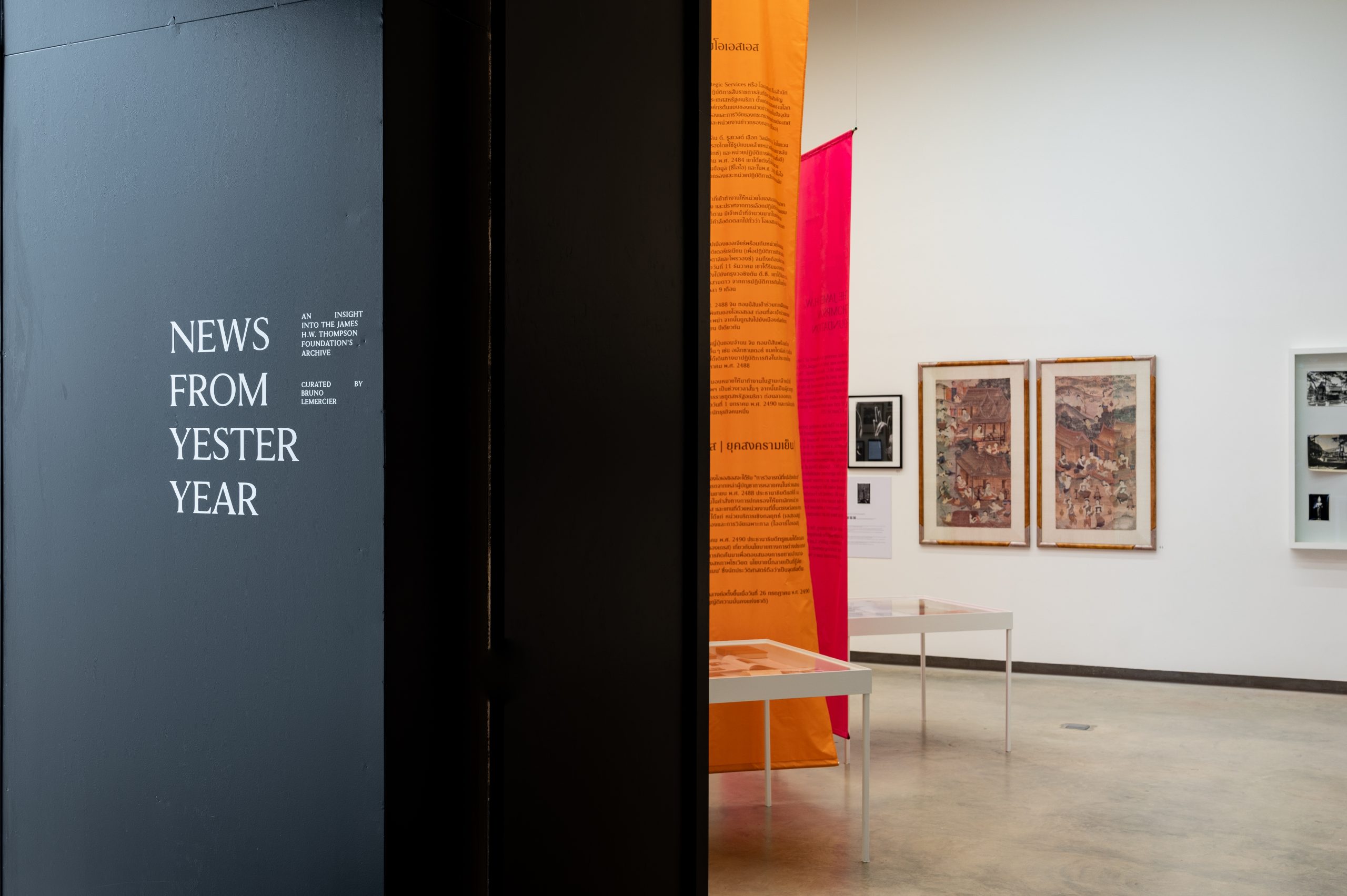
The exhibition ‘News From Yesteryear: An Insight into the James H.W. Thompson Foundation’s Archive’ takes place between June 24th and October 2nd, 2022 at the Jim Thompson Art Center with Bruno Lemercier, Senior Conservator of the James W. H. Thompson Foundation, as the curator. The exhibition tells the lesser known stories of Jim Thompson in addition to his role as the ‘Thai Silk King.’ Parts of his life, roles that were unbeknownst to the public are put together from his past interviews, snapshots, hand-written letters and pristinely preserved collectibles. Most of the items had never been shown anywhere and are taken from the James H. W. Thompson Foundation’s very own private archive to bring viewers a fresher and more casual insight into the life of Jim Thompson.
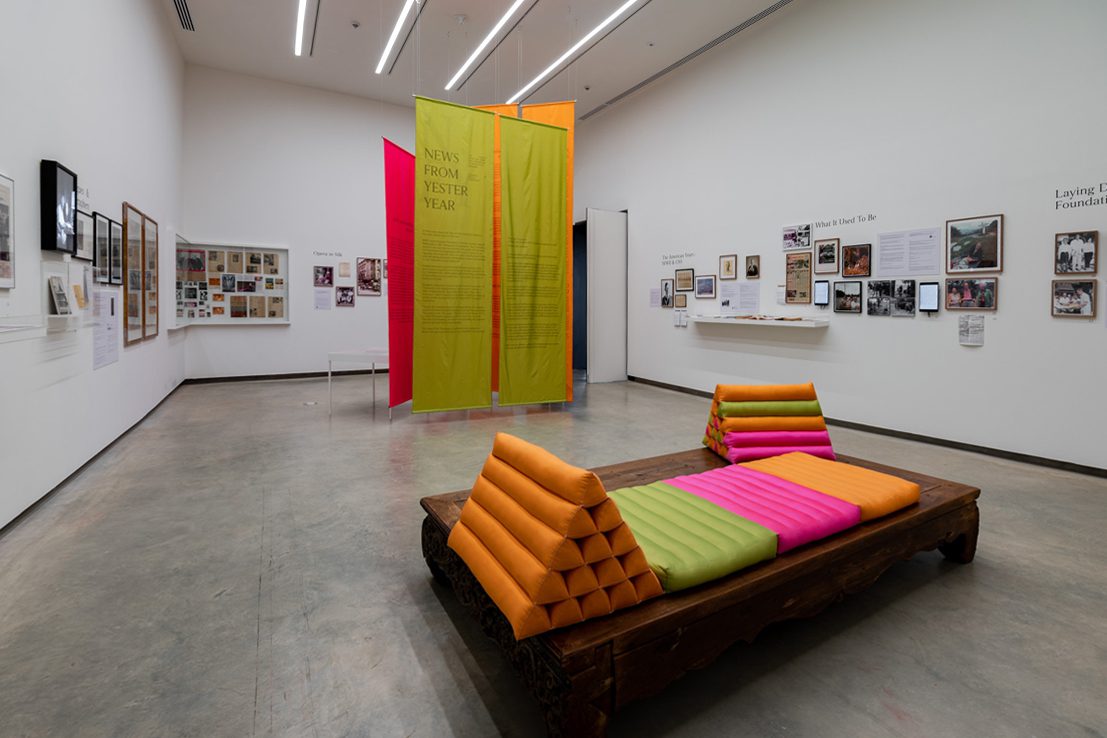

Pieces of silk fabric in acid green, shocking pink and bright orange color hanging from the ceiling with their bottom hems almost touching the floor are accompanied by stories on white walls, photographs, books, a layout plan of a traditional Thai/Western home, a documentary film and several other documents. The physical details of the displayed objects are visible as viewers make their way into a less familiar part of Jim Thompson’s life. The exhibition brings together evidence, information and stories that were told and documented, presented with captions, inviting viewers to take a closer look and read. Not only do captions work to provide a better understanding about the stories depicted in the exhibited photos, but they also allow viewers to experience such stories in a way that photographs alone cannot entirely encapsulate. Written words help elaborate different contexts surrounding different incidents. The documentary ‘The House of the Klong,’ which is screened as a part of the exhibition, inserts footage of short interviews of Jim Thompson that were recorded when he was alive. With merely one-hour runtime, the documentary captivates viewers with its cinematic work and engrossing storytelling as it takes viewers to learn more about Jim Thompson, and other aspects of his life that center around his status as the ‘Thai Silk King’ in such an interesting manner, such as his role as a curator who showcased Thailand’s ancient art and artefacts in several museums throughout the United States.
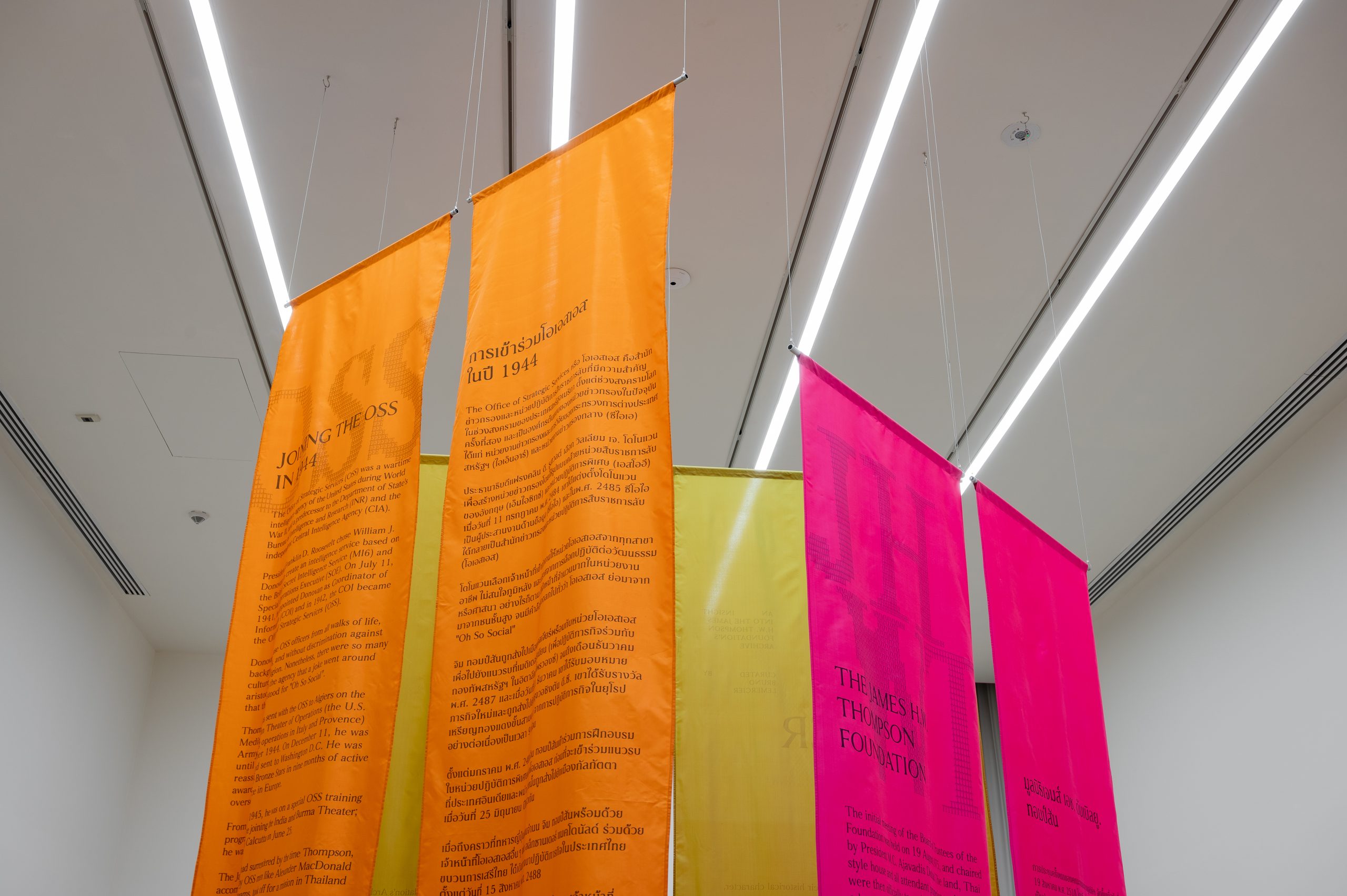
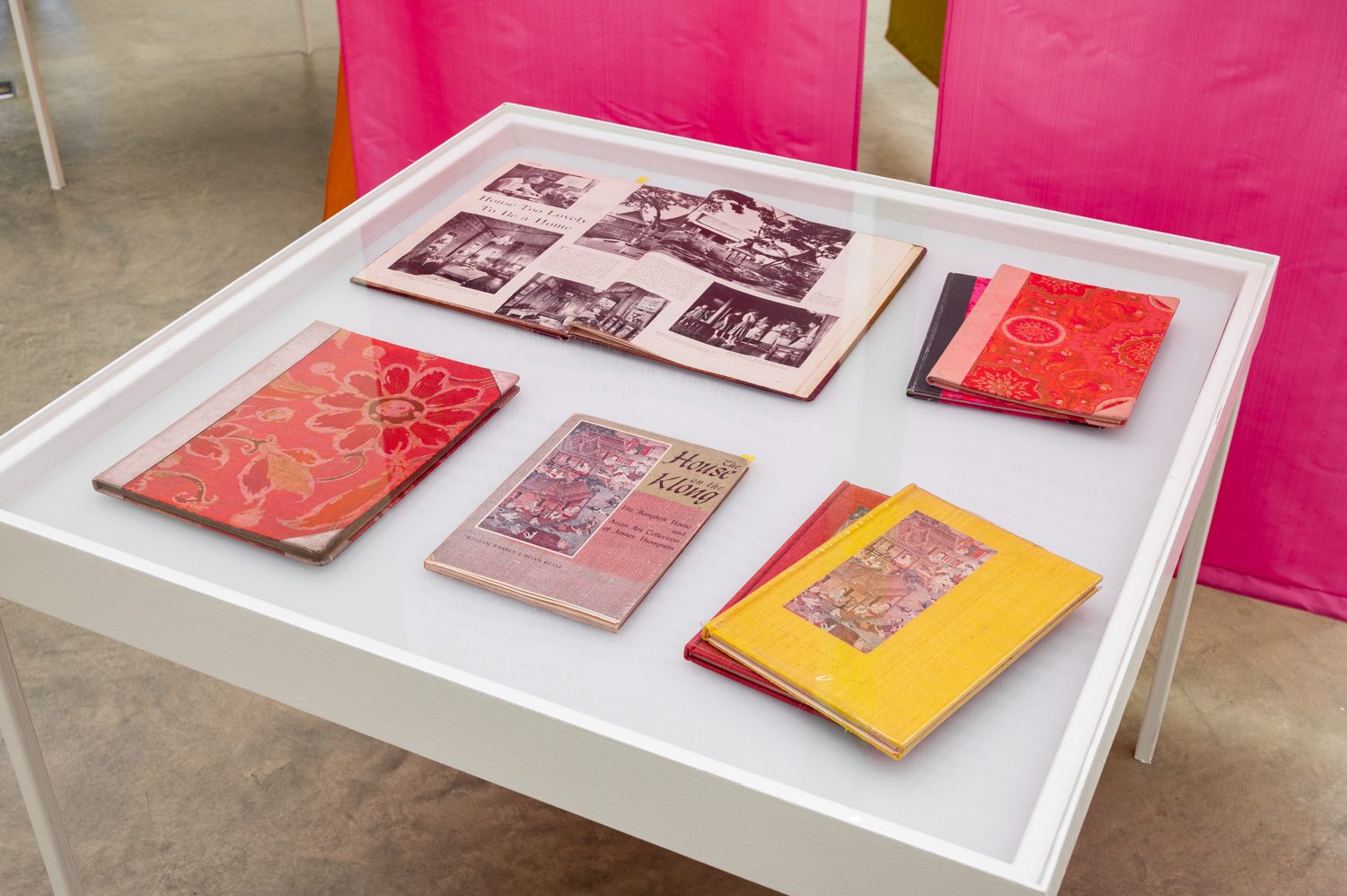

While archive exhibitions such as this one often, by nature, ask and designate a role for viewers to learn/experience the curated contents, the space inside this exhibition room invites viewers to collect, select and/or archive Jim Thompson’s stories on a piece of A5 paper (the papers are provided at different parts of the room) before putting it inside a small acid green-colored file, which is handed over to them at the registration table. A QR Code is incorporated to help provide additional information for viewers to follow and have a better understanding about each story or subject of the exhibition on a more profound level. One of the interesting items of the exhibition is Item A 29, a carved Siamese teak wood bed, “a really rare piece,” according to Thompson that he used in his new shop (1955) to throw the silk on. The teak wood bed is no longer used to display the silk, but a seating area I and a family of foreigners sat on while we were watching the documentary. It was then that the teak wood bed confused two young viewers, who were discussing the whereabouts of Item A29, before they finally noticed a sticker with the number 29 on one of the corners of the bed, on which someone was sitting. They stopped to take a look at the bed before continuing to browse the exhibition. Certainly, this teak wood bed isn’t just a collectible item displayed as an art object that is filled to the brim with antiquity and stories. Used as a seating area, the bed’s utilitarian status remains alongside its role as an exhibited item, fusing itself as a part of many stories and contexts that will be embellished and recreated as each day of the exhibition passes by.
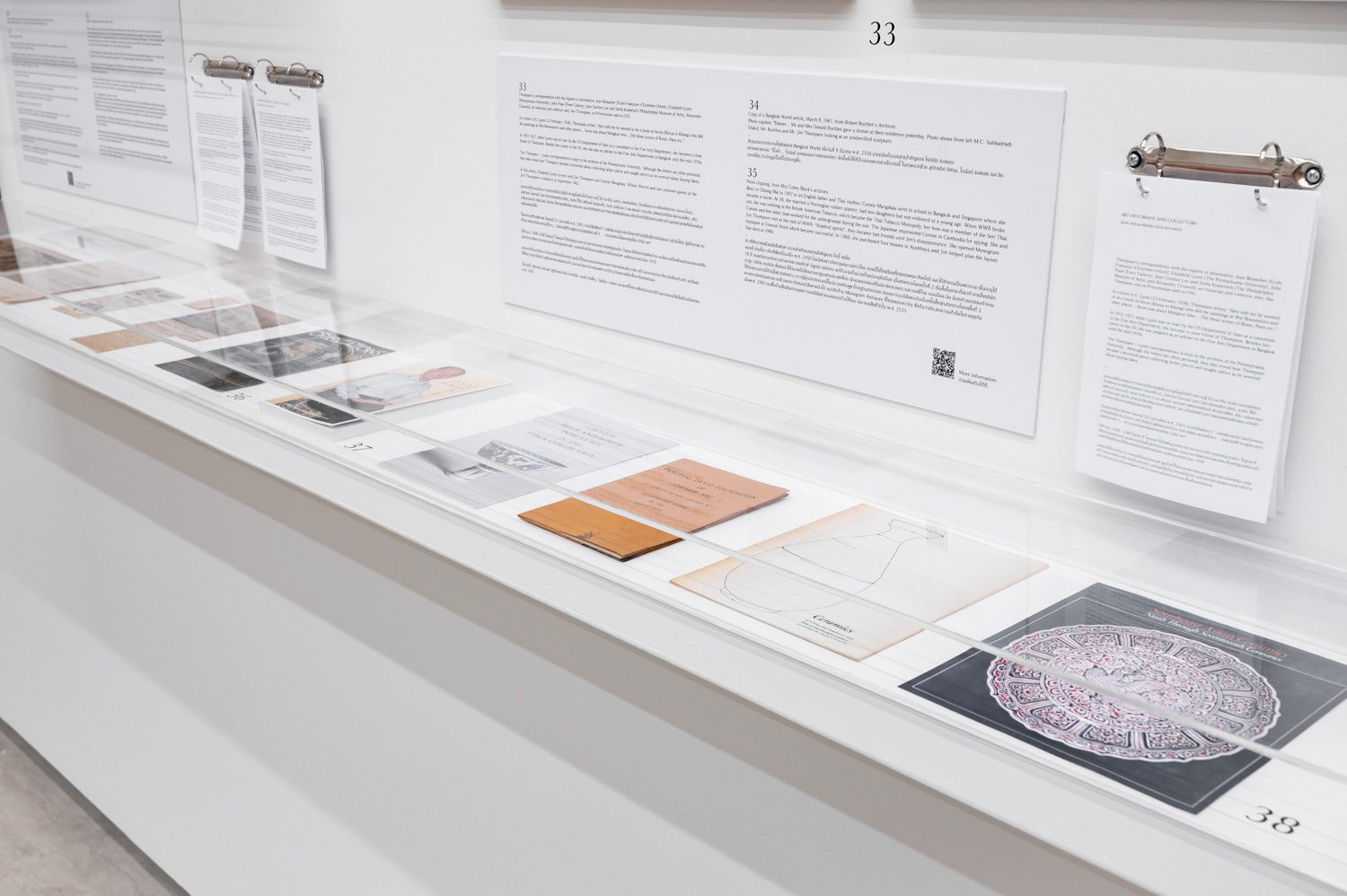

Photo: Surawit Boonjoo

The exhibition offers its viewers an opportunity and access to other corners of Jim Thompson’s life through the James H.W. Thompson Foundation’s Archive. It shines a light on the stories existing in other parts of his life; stories which may be deemed unimportant but were integral fragments which made up his identity and character. Viewers are never forced to look or read things they don’t wish to, for inside this exhibition space, they are given the power to choose and archive each story based on their very own preferences.



